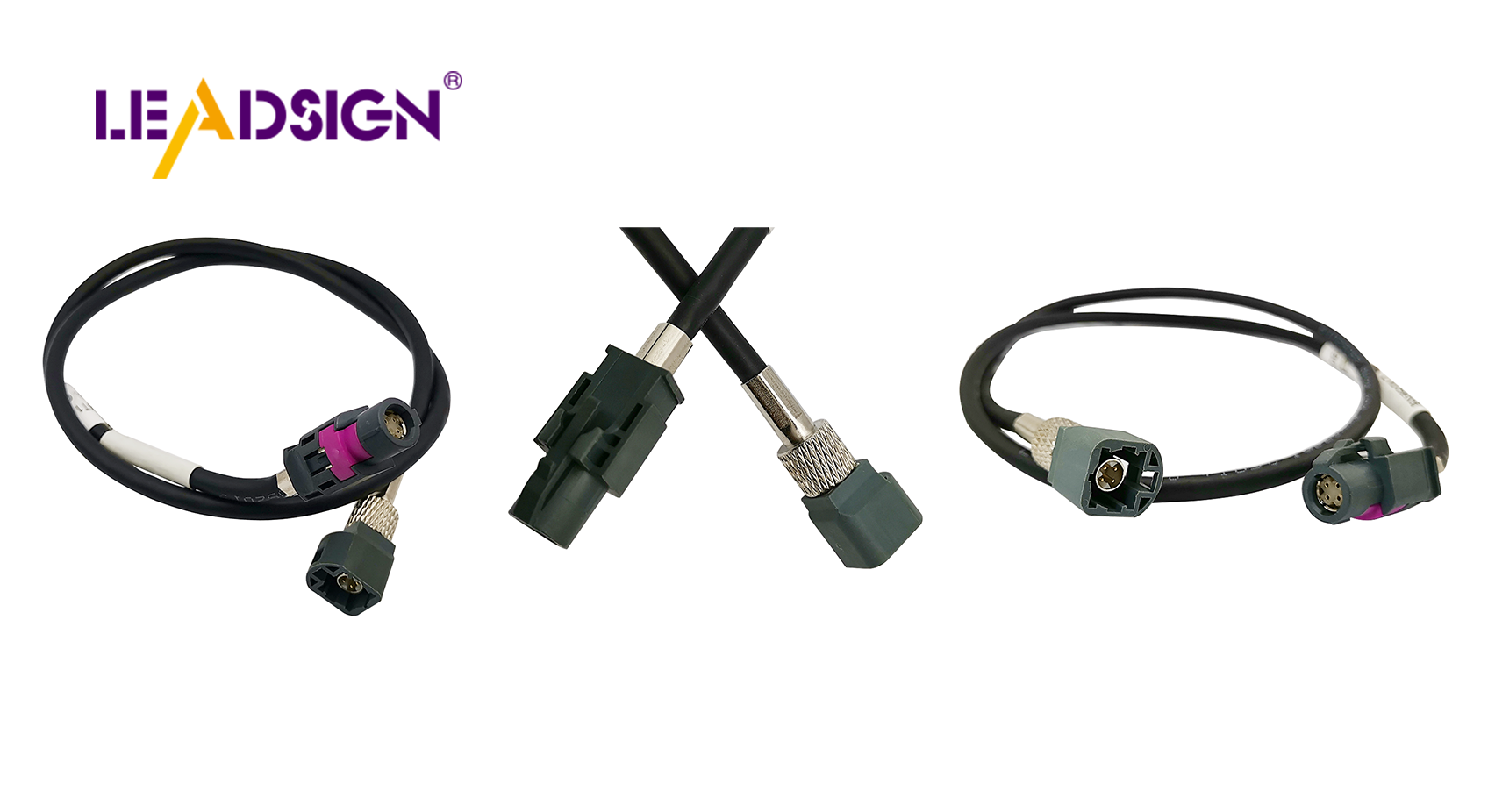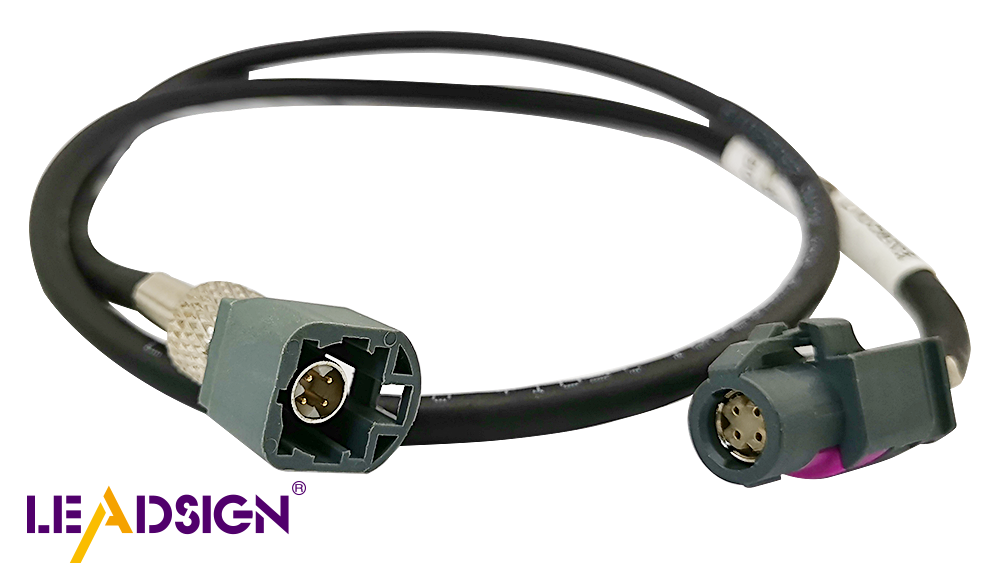Understanding Automotive Wiring Connector Types

Automotive wiring connector types are crucial for cars. They play a vital role in ensuring the smooth operation of your car's electrical systems. With the advancement of technology in electric cars and the integration of new security features, the demand for improved wiring connectors has increased. These connectors are essential for maintaining the safety and comfort of modern vehicles. Understanding the various automotive wiring connector types highlights their significance in enhancing your car's efficiency.
Basics of Automotive Wiring Connectors
What are wiring connectors?
Wiring connectors are key parts in a car's electric system. They link circuits, letting electricity flow smoothly. These connectors have different shapes and sizes for specific car uses. They are made from copper, brass, or bronze. These materials conduct electricity well and resist rust. This keeps your car's electrical systems working properly.
Why are they essential in vehicles?
Connectors help keep cars safe and working right. They let you connect or disconnect wires easily for fixes. Connectors safely pass power between parts like sensors and controllers. Modern cars need this because they have many electric features. Good connectors stop electrical problems and improve car performance.
Components of a Wiring Connector
Connector housing
The connector housing is the outer cover protecting the inside parts. It's made from strong stuff to handle heat and shaking. The housing stops short circuits, keeping the car safe electrically. Some housings lock to avoid accidental unplugging, making connections more reliable.
Terminals and pins
Terminals and pins carry electricity inside a connector. They join wires to other parts electrically. For high power needs, bigger pins ensure good contact for power flow. Some connectors use color codes on terminals to match wire colors, making setup simple.
Seals and gaskets
Seals and gaskets shield the connector from water, dust, and dirt. They keep connections strong by blocking outside harm from affecting them. Using quality seals ensures your car's electric systems stay dependable even in tough conditions.
Historical Perspective
Evolution of Wiring Connectors
Early designs and materials
Long ago, car wiring connectors were simple. They used copper and brass. These metals carried electricity well but broke easily. As cars got more complex, better connectors were needed. Makers tried new designs to make them last longer.
Technological advancements
Over time, technology changed connectors a lot. They became smaller to fit new car needs. Smaller connectors cost less and saved space. This helped make cars more efficient and compact.
Impact on Automotive Design
Changes in vehicle architecture
New connectors changed how cars look inside. Modern cars are sleeker because of smaller connectors. They help fit electrical parts better, making cars smooth and fast.
Influence on modern automotive systems
Connectors affect today's car systems too. They make your car safer and work better. Good connectors link important parts like sensors safely. This makes driving smoother and safer for you.
Types of Automotive Wiring Connectors

Knowing different automotive wiring connector types helps pick the right one. Each type has special jobs and benefits.
Blade Connectors
Features and uses
Blade connectors are flat and fit in small spaces. They are used in car radios and lights. They join wires fast and safely.
Good and bad points
Good:
Easy to plug in or out.
Works well for low power.
Bad:
Not good for high power.
Can rust if not sealed well.
Pin Connectors
Features and uses
Pin connectors have round pins to link wires. They work great for high power, like headlights. Their shape makes a strong link.
Good and bad points
Good:
Handles high power well.
Makes a steady connection.
Bad:
Harder to put in place.
Needs exact fitting.
Other Automotive Wiring Connector Types
Bullet Connectors: Features and uses
Bullet connectors are round, easy to unplug. Used where you need quick disconnects often.
Good and bad points
Good:
Easy to use.
Great for short-term links.
Bad:
Not as tight as others.
Might get loose over time.
Round Connectors: Features and uses
Round connectors give a strong link, used where there's water or dust. Found in engine areas.
Good and bad points
Good:
Stands up to weather.
Seals tightly.
Bad:
Bigger than other kinds.
Can cost more money.
As cars get smarter, connectors must change too. They need to send data faster without losing signals. New designs help with this, important for today's cars' systems.
How to Install Connectors
Getting Ready and Tools
Tools You Need
Before starting, gather the right tools. You need a crimping tool. It helps hold the wire in place by squeezing it tight. This makes a strong link for electricity. Get a wire stripper to take off the plastic cover from wires. A multimeter checks if wires are connected right. Keep screwdrivers nearby to tighten connectors.
Staying Safe
Safety is very important with electric work. Always unplug the car battery first. This stops shocks or sparks. Wear goggles to protect your eyes from bits flying around. Use tools with rubber handles to stay safe from shocks. Make sure your work area is dry and bright. Check all connections twice to avoid problems later.
Steps for Connecting Wires
Joining Wires to Terminals
Take off wire cover: Use a wire stripper to remove about half an inch of plastic from each end of the wire.
Put wire in connector: Slide the bare wire into the connector's hole snugly.
Squeeze connector tight: Use the crimping tool to press down on the connector so it holds onto the wire well without needing heat or solder.
Keeping Connectors Secure
Place connector correctly: Line up the connector with its matching part on the car so it fits right.
Lock it in place: Some connectors have locks; use them so they don't come apart by accident, especially where there's shaking.
Check connection works: Test with a multimeter to see if electricity flows through well; fix any issues if needed.
Following these steps helps you put in wiring connectors safely and well, making your car's electric parts work better and safer.
Common Questions and Issues
Frequently Asked Questions
How to choose the right connector?
Picking the right connector is key for your car. First, know what your car needs. Think about the type, like blade or pin. Check where it will be used. If it's wet, pick one that seals well. Always check if it's strong and won't rust. This keeps everything working smoothly.
What are the signs of a faulty connector?
Bad connectors cause big problems. Watch for flickering lights or power loss. If electronics act weird, check connectors. Loose or rusty ones often cause trouble. Regular checks help find issues early and keep you safe.
Troubleshooting and Solutions
Identifying common problems
Common issues include loose connections, rust, and wear. Loose ones stop electricity flow, hurting performance. Rust happens in wet spots, making them work poorly. Vibration can damage them over time.
Preventive measures and maintenance
To keep connectors good:
Regular Inspection: Look at them often for damage.
Clean Contacts: Use cleaner to remove dirt.
Secure Connections: Make sure they fit tight.
Protect from Moisture: Use seals to block water.
These steps keep your car's systems reliable and lasting longer by stopping problems before they start.
Understanding car wiring connectors is important. They help your car's electrical parts work well. Connectors let data move between sensors and controllers easily. This makes modern car features better. Knowing about them helps you pick the right ones to avoid problems and stay safe. As cars become electric, we need stronger connectors. Keep learning about new connector technology to keep your car working smoothly.
See Also
Exploring HSD Connectors in the Automotive Sector
Significance of Fakra Connectors in Contemporary Cars
Navigating Ford Fakra Connectors

